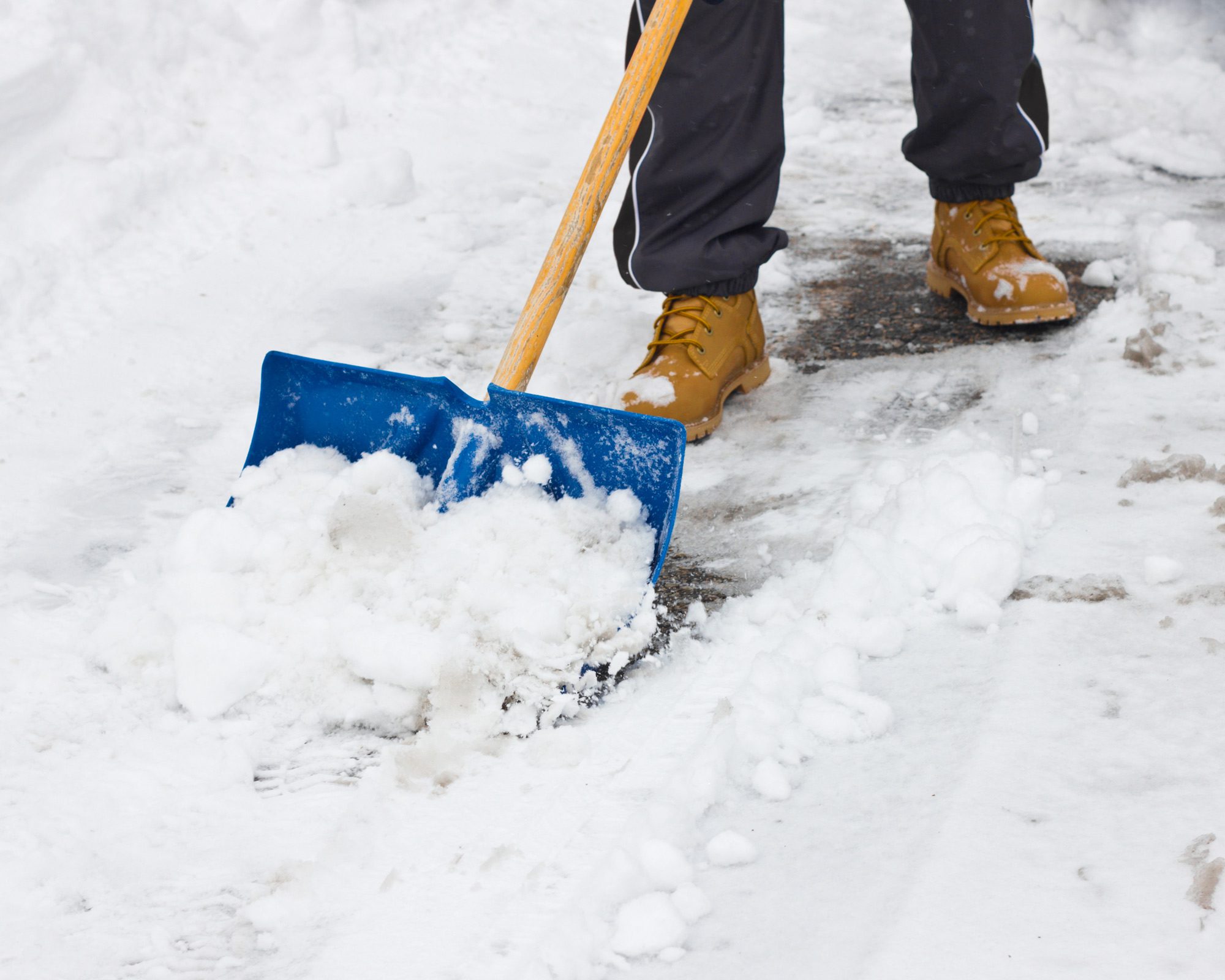One of the most common reasons that people come to the chiropractor in the winter is back pain, and you might be surprised at what causes it: shoveling snow out of the driveway or off the sidewalk!
While it’s important to keep walking areas snow-free to prevent slips and falls, it’s also important to take precautions to avoid back pain and injuries.
In this blog, we’ll share everything you need to know about avoiding injury while shoveling snow, including the best snow shoveling technique.
Our tips can help you avoid back issues and decrease lower back pain during the shoveling process. This can ensure that your steps stay clear and your body stays safe as well. Let’s get to it.
How to Prevent Lower Back Pain and Injuries While Shoveling Snow
Before shoveling snow, it’s vital to warm up your back, arms, and other parts of the body that will be doing the work, according to the American Chiropractic Association (ACA).
In fact, with every aerobic exercise, it’s important to warm up the body. We suggest doing a variety of back and hamstring stretches before shoveling snow to get your muscles and spine ready for the physical labor ahead. This can help prevent lower back pain and injuries while shoveling snow.
Read on for more information regarding lowering your injury risk.
Common Injuries Associated With Snow Shoveling
Research shows that shoveling snow can lead to multiple different injuries. These can happen if you overwork yourself without taking adequate breaks, you don’t stay hydrated, or you aren’t using the proper positioning while shoveling.
You can also become injured if you take a fall or slip if you aren’t wearing the proper shoes.
Here’s a shortlist of the most common injuries from snow shoveling:
- Bruising and scratches
- Broken bones
- Muscle strains and sprains
- Lower back injuries
- Head injuries
- Arm and hand injuries
Proper Snow Shoveling Technique
If you’ve been tasked with shoveling snow at your house, remember that the right snow shoveling technique can lower your chance of injury. You’ll want to get an ergonomic snow shovel for starters, and always be sure to warm up your body before getting to work.
The most important things to remember when shoveling snow are:
- Thick Clothing: Research shows that you have a higher chance of pain and joint issues if you spend time outside without the right winter clothing. Why? Your muscles and blood vessels are forced to work overtime to keep your body warm, decreasing the amount of blood that goes to your hands and feet. That can inhibit your muscles’ ability, especially if you do not exercise regularly or have not warmed up before shoveling snow. Always opt for multiple layers of winter clothing and well-fitted winter boots to avoid slipping on the ice and injuring your back or other parts of your body.
- Posture: Keeping your back upright and in alignment can decrease the straining on your spine and joints. This can make shoveling snow more comfortable without putting unnecessary pressure on your body and inflicting pain.
- Timing: If the snow is falling hard, you might be tempted to wait until it comes to a stop before shoveling. However, this can be detrimental to your back. Stay on top of the snow by shoveling it multiple times during the day in small increments. This can help keep you from shoveling too much snow at one time, which can strain your back and increase the chance of injury.
- Position: Once you’re in warm clothes, and you’ve done some stretches to warm up your muscles, it’s time to get into position. Always push the snow to the area in front of you rather than toss it somewhere. (Twisting or turning abruptly can cause injury.) You’ll want to bend your knees to raise the shovel. During this process, your legs and arms should alleviate pressure from your back. Push your chest out when shoveling snow, and leave a little distance between your feet to maintain control over the shovel. Place one of your hands around the handle with the other hand approximately one foot lower on the shovel, maintaining your posture the entire time.
- Breaks: Anytime you are exerting your body a lot, breaks are essential. Step aside from shoveling as often as you can to prevent strains and sprains. Your body has an increased chance of injury if you are worn out.
- Stay Aware: If, at any point, your chest is hurting or you can’t catch your breath, put the shovel down, and call a doctor. Some snow shoveling incidents can lead to heart and chest problems, so it’s best to get in touch with medical professionals if you have any symptoms of such conditions.
- Water: Drink plenty of water before shoveling, and keep a water bottle handy during the shoveling process so that you can stay hydrated. (Note: It can be difficult to tell if you’re thirsty when it’s cold out. Drink water anyway.)
We can help with lower back pain.
Are you experiencing lower back pain from shoveling snow? We have a solution for that. Come to your local Summit Chiropractic and Sports Institute in Spokane for the best lower back pain treatment.
We will treat your back pain and other symptoms, teach you helpful exercises for lower back pain relief, as well as use proven chiropractic, specialized soft tissues techniques, and functional rehabilitation to mobilize and strengthen your back after an injury. That can help your back feel better in the short term and provide long-term results when you keep up with regular chiropractic care.
If you’re tired of falling victim to back pain and injuries when shoveling snow, Summit Chiropractic, and Sports Institute can help. Schedule your first chiropractic treatment session today.
